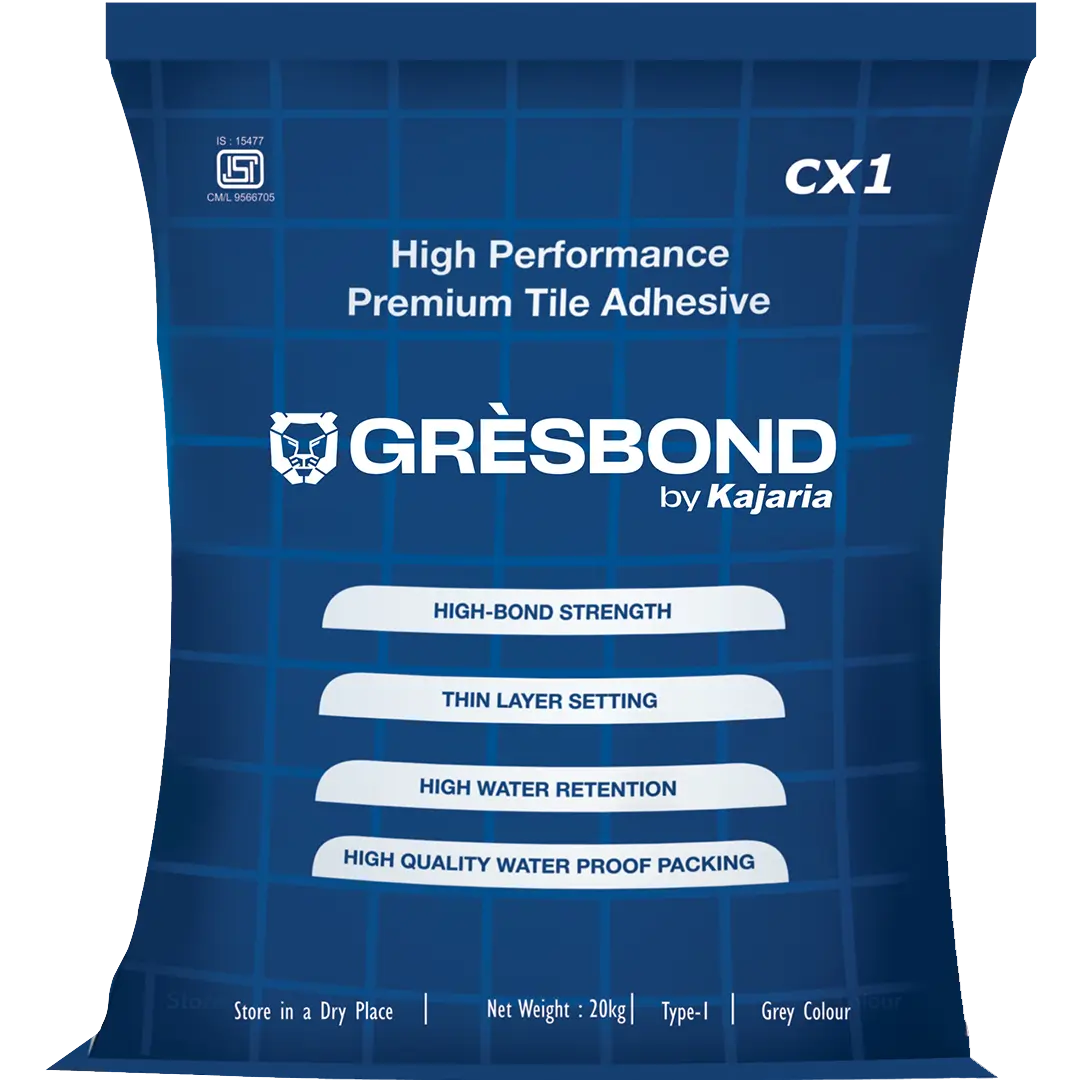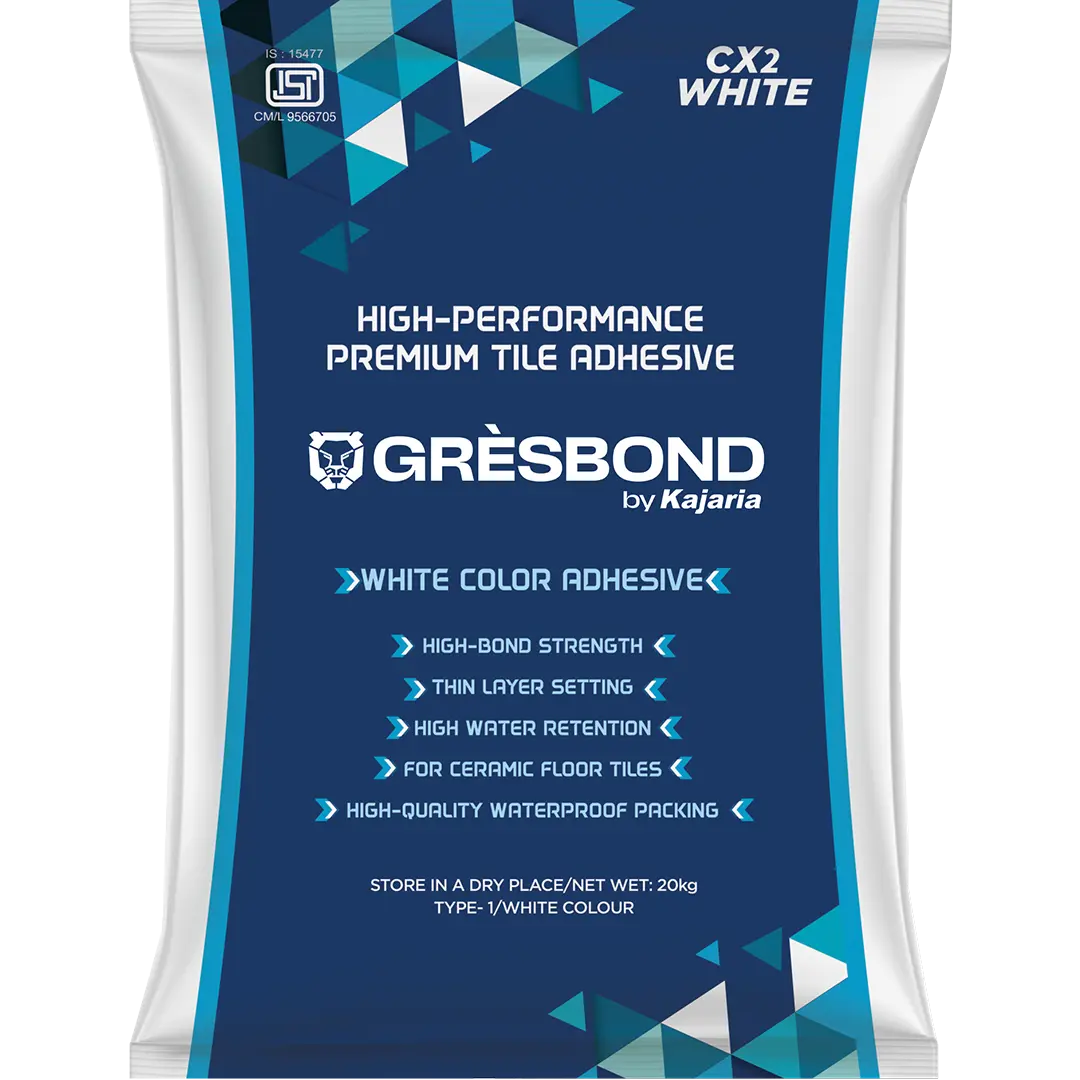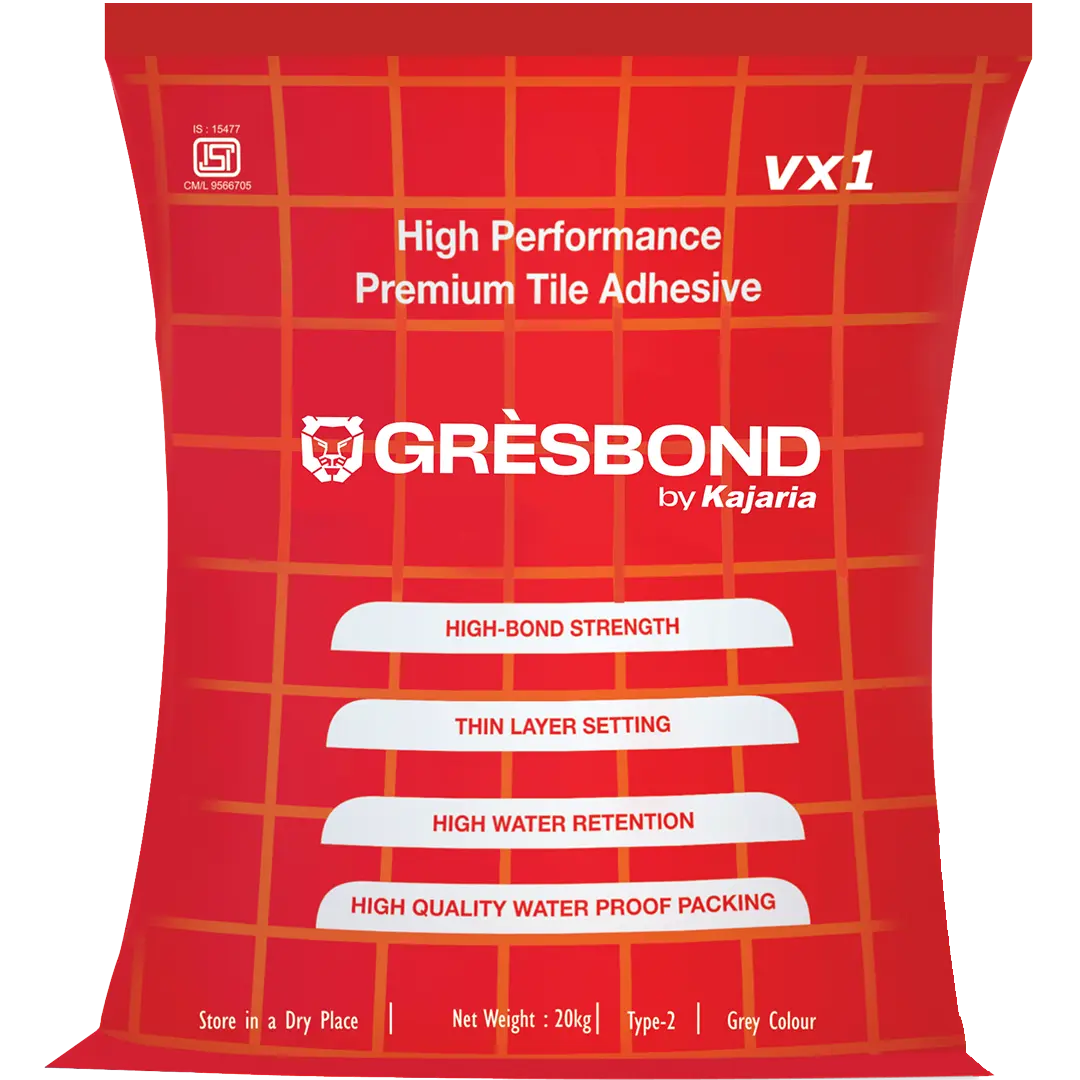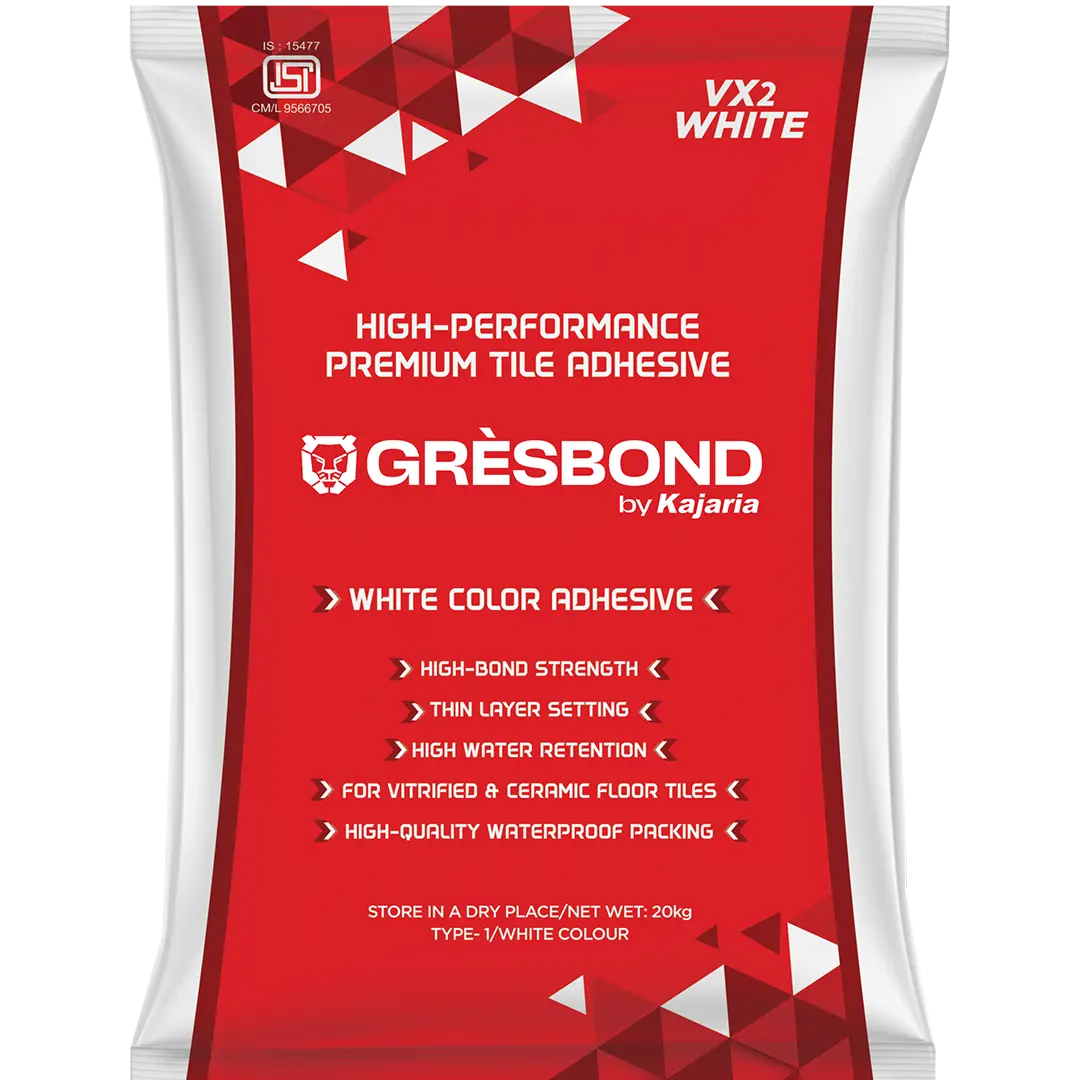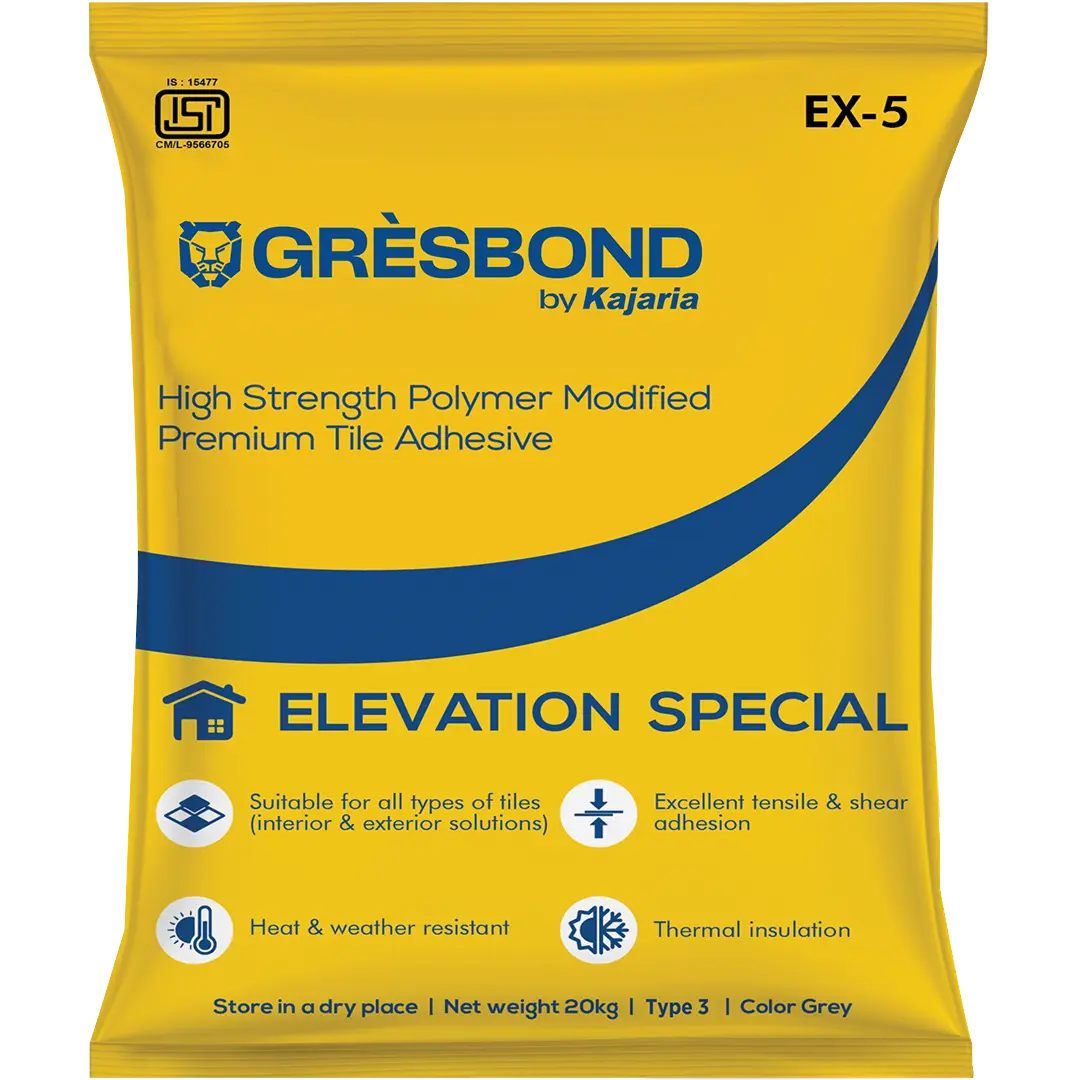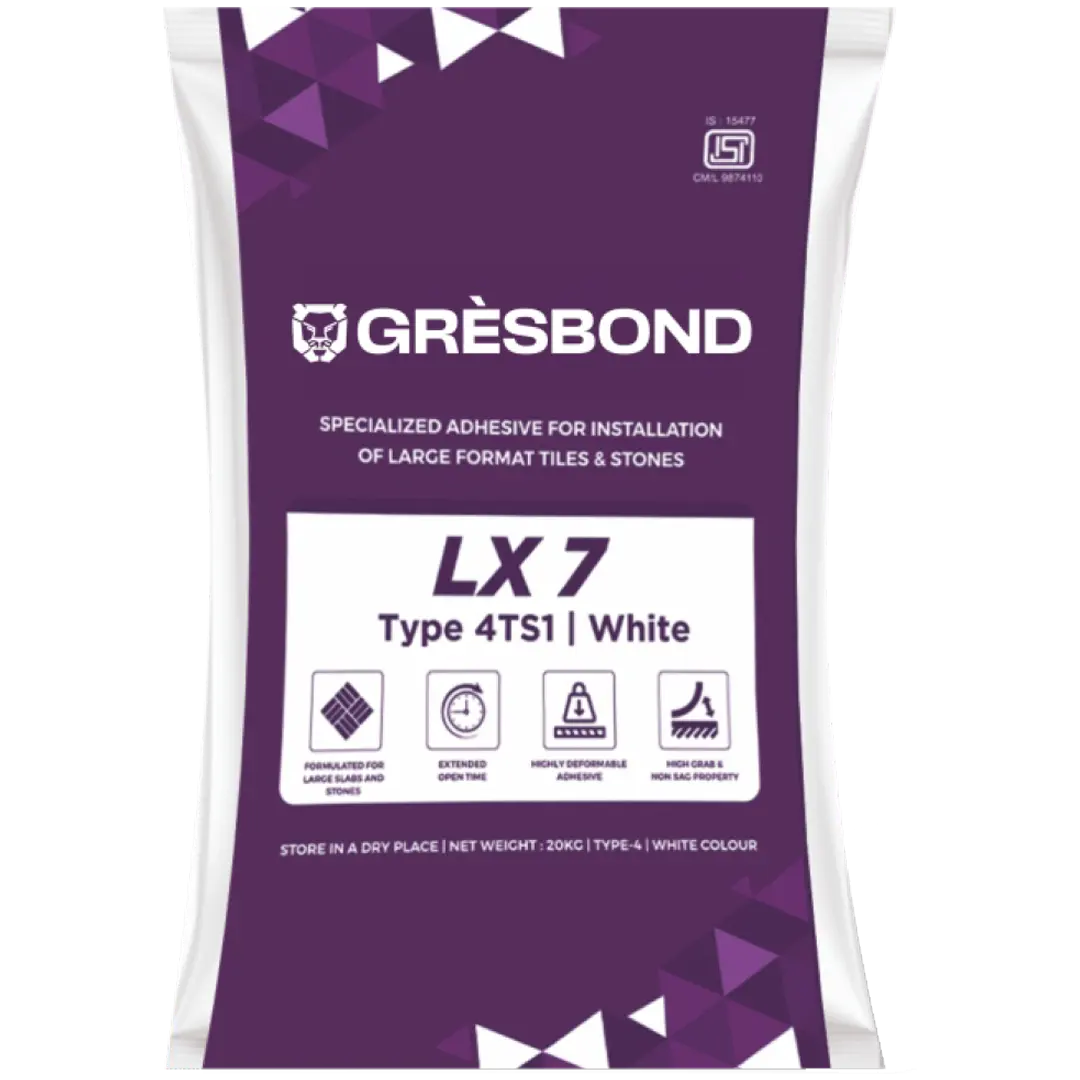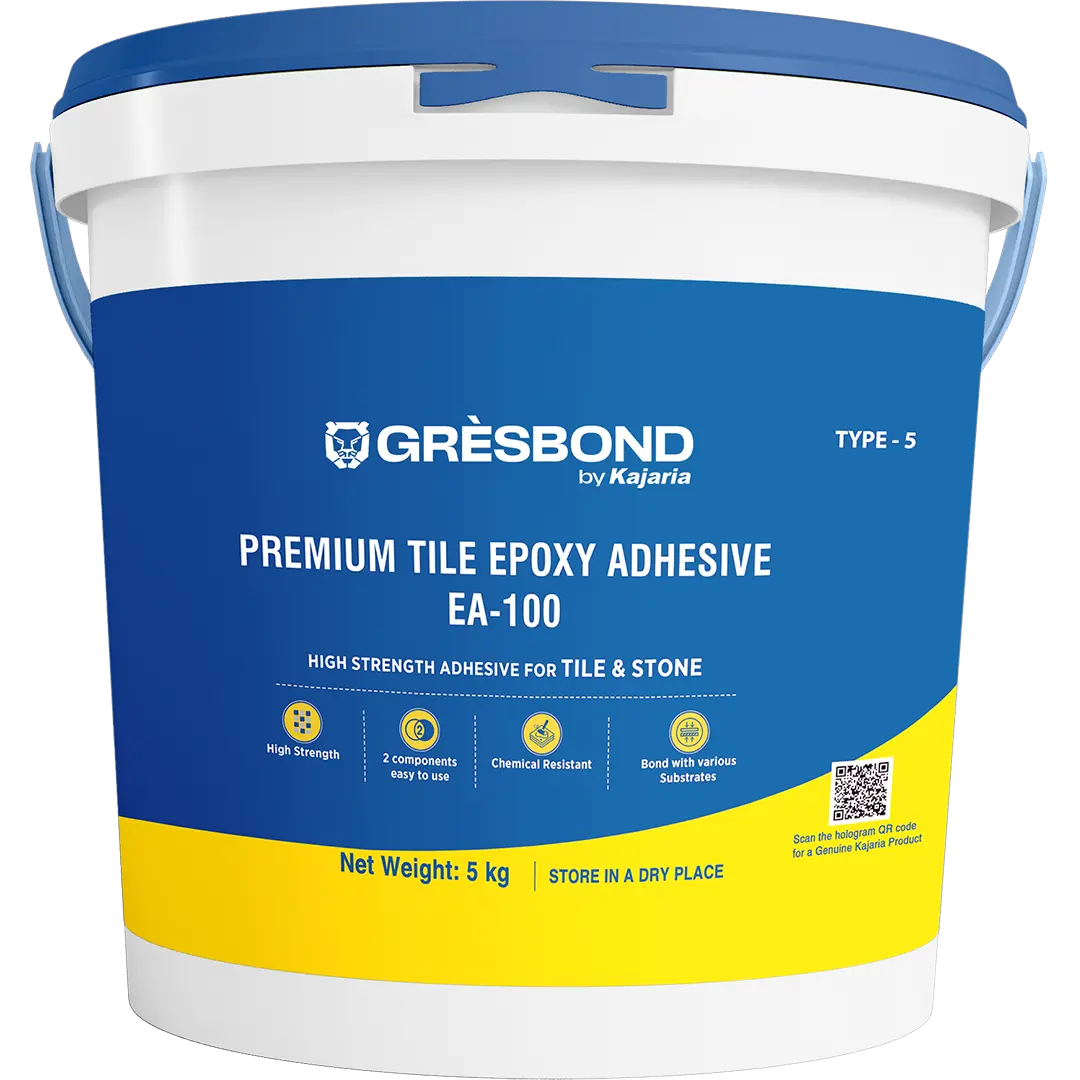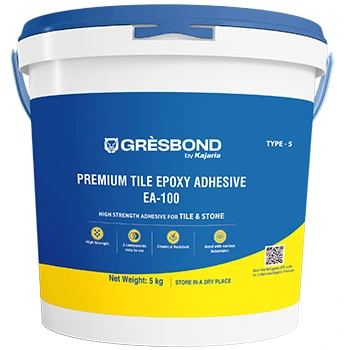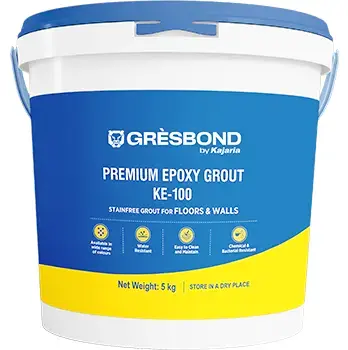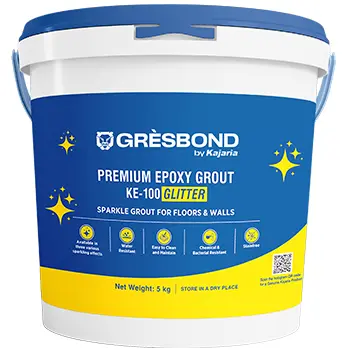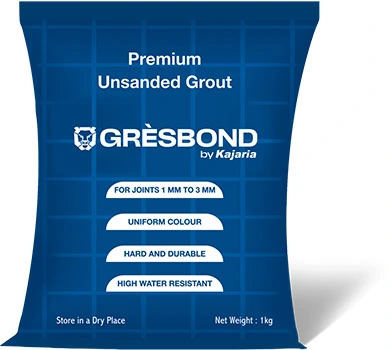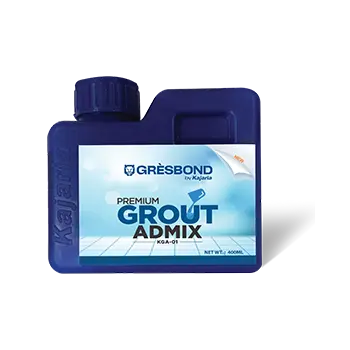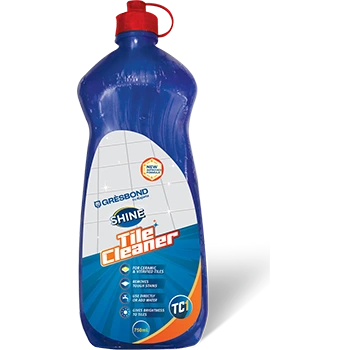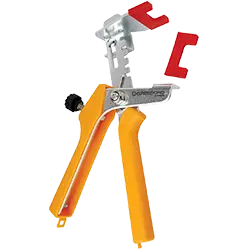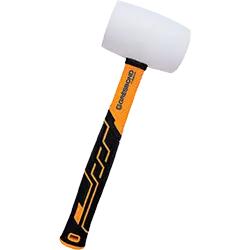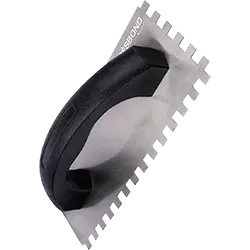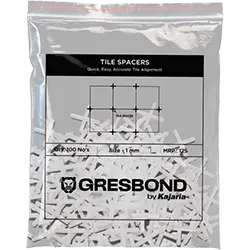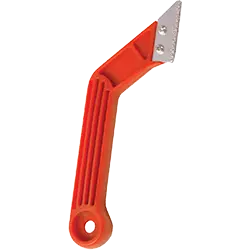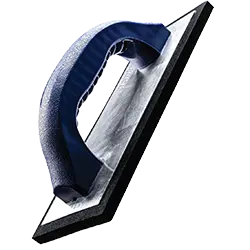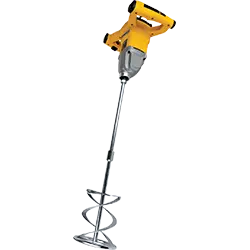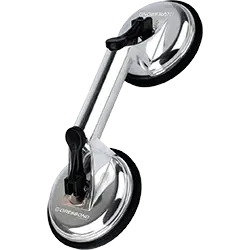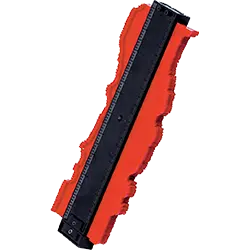How to Use Tile Adhesive for Perfect Tile Installation
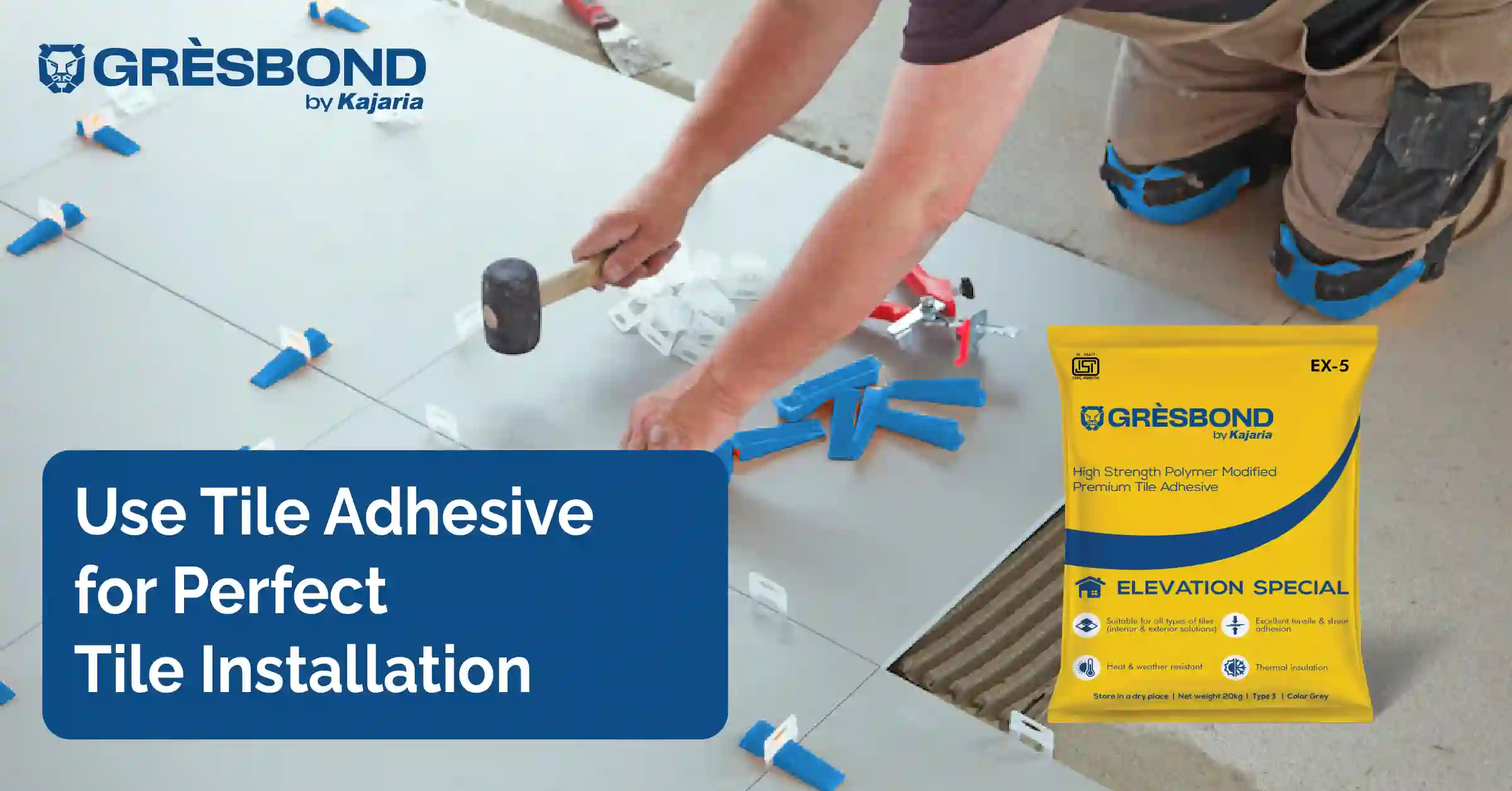
19
Mar 2025
How to Use Tile Adhesive for Perfect Tile Installation
Tiles can add beauty and functionality to any space, but they are simply not beautiful tiles that will perfect tile installation. Bonding adhesive is what would keep your tiles firmly fixed and will ensure that they will last as long as possible. If you want to add a new tile floor, wall, or backsplash, the correct adhesive will make all the difference.
Here's how to use tile bonding adhesives, the reasons for tile adhesive cement's existence, and important tips to guide you when bonding tiles, along with the implications of tile fixing chemical when you want it in place for a long time, will form the content of this guide.
Perfect Tile Installation Using Tile Bonding Adhesives
Tiles are among the most appropriate materials for flooring and walls, even in outdoor spaces, mainly because they are very strong and beautiful. With tile bonding adhesives, however, the tile installation is guaranteed. The bond created between the tiles and the surface is maintained, and thus, the tiles become safe against risks of shifting, cracking, and water damage.
This article is meant to show you how to select and apply the best tile adhesive for use in tile installation.
What Tile Bonding Adhesive Is and Why It Is Essential

Tile bonding adhesive is the one you apply on a wall or floor to attach tiles to surfaces. It plays its part in fixing tiles on the wall or floor and ensures that tiles are well secured and less likely to come loose with time.
Tile adhesives are specified strong so that they can hold tiles in a certain position while being flexible enough to allow for slight movements in the substrate. It is that, in terms of identifying the right tile adhesive either when you're using tile adhesive cement for flambing a floor or bonding tiles on the wall.
Benefits of Using Tile Bonding Adhesive
Advantages of Using Tile Bonding Adhesive Here are some of the main beneficial points gained from using tile bond adhesives in putting up your installation.
- Bonding:The first and main function of tile adhesives is to fix the tile in position once installed. Thus, the bond will do its job of preventing the tile from shifting or loosening it over time.
- Water Resistance:Certain tile adhesives have moisture resistance specifications, thus making them usable in areas such as kitchens, bathrooms, and outdoors.
- Flexibility:These adhesives can be applied to nearly all surfaces, including concrete, drywall, cement board, or pre-existing tile surfaces.
- Durability:A tile bonding adhesive, properly applied, makes sure that tiles will remain firm for the years to come without having to worry about crack formation or loosening.
Selecting the Appropriate Tile Adhesive Bonds According to Requirement

The selection of tile adhesive bonds for any project must be done based on what works for that particular project. Below are the most used:
- Thin-Set Adhesive: This is the most common adhesive used for floor and wall tiles. It consists of cement, sand, and a water-retaining agent, allowing it to adhere well to a variety of surfaces.
- Tile Adhesive Cement: This adhesive is specifically created for bonding ceramic, porcelain, and natural stone tiles. It provides excellent bonds that are durable and do not crack with time. For heavy tiles or tiles laid in high-traffic areas, tile adhesive cement remains a good option.
- Ready-Mixed: This adhesive comes pre-mixed and is usually for small jobs or do-it-yourself work. It is more user-friendly but is not intended for major commercial installations.
- Fast Setting: Fast-setting adhesives work best when working under tight time constraints. This type of adhesive allows for quicker installations and allows grouting to occur sooner.
Choosing the proper adhesive depends on the tile size, the type of surface, and the area where you intend to install the tiles.
The Application of Tile Bonding Adhesives
The application of tile bonding adhesive is one of the most critical stages of installation. For the best results, follow these guidelines:
- Preparing the Surface: Any adhesive, including bonding agents, should be applied on a clean, smooth, and dry surface. Dust, dirt, grease, and any old adhesive residues must be removed to ensure good bonding conditions.
- Mixing the Adhesive: If a powder adhesive such as tile adhesive cement is used, mix the adhesive powder with water according to the manufacturer's directions. Stir until the adhesive is smooth and creamy. The ready-mixed types require no preparation, but it is a good idea to ensure they are thoroughly mixed just before use.
- Application of Adhesive: Use a notched trowel to spread a thin layer of adhesive over the surface. Hold the trowel at a 45-degree angle while spreading the adhesive so it can be level. The notches also help give the correct retention of adhesive.
- Fixing the Tiles: After applying the adhesive, press the tiles slowly into place, correct twisting for a firm bond. Keep small joints between the tiles for the grout, using tile spacers to help keep the spacing uniform.
- Press and Adjust: Pressure should then be applied to each tile to ensure bonding. Correct the position of tiles if required to maintain an alignment.
- Allow for Setting: Let the adhesive set for at least 24 hours before grouting. This gives time for the tile to adhere well to the substrate.
How To Choose The Best Tile Fixing Chemicals For Your Tile Installation

Choosing the best tile fixing chemical is as important as choosing the best adhesive. Tile fixing chemicals hold the tiles in place and enhance their performance in terms of water resistance and flexibility. So what is to be looked for in a tile fixing chemical?
- Water Resistant: Choose a tile fixing chemical that has excellent waterproofing capability in areas where moisture is present and tiles are being fixed, like bathrooms or kitchens.
- High Bond Strength: The fixing chemical should be strong enough to hold the tiles onto the surface and prevent movement or cracking over time.
- Flexibility: This would be essential to situations with temperature fluctuations. The tile fixing chemical must permit small movements in the substrate to avoid cracking of the tiles.
Choosing the right tile fixing chemicals will keep your tiles stuck in place irrespective of the conditions.
Common Mistakes Not To Make While Using Tile Bonding Adhesives
Even though tile bonding adhesive is easy to work with, there are some common pitfalls that DIYers and professionals alike should try to avoid:
- Not Preparing the Surface: Bonding between the adhesive and the surface will be weak if the surface is filthy or fails to present a proper surface finish. In such cases, the tiles will surely loosen after some time.
- Using the Wrong Adhesive: Adhesive should always be chosen according to the project. Do not go about using an all-purpose adhesive for large, heavy-type tiles or wet areas.
- Overapplying Adhesive: Overapplication of adhesive causes varied bonding among tiles, which creates untidy grout lines.
- Not allowing the Adhesive to Dry Properly: If one rushes to set tiles and grout, there might be shifting as well as bonding issues. Always allow the adhesive enough time to set.
Conclusion: Perfect Tile Installation With Tile Bonding Adhesives

Perfect tile installation starts with picking the right tile bonding adhesive. It does not matter if it is tile adhesive cement or other kinds of adhesives: a suitable material applied well leads to longevity and aesthetic appeal. With the knowledge of using tile bonding adhesives and the selection of the best tile fixing chemicals mentioned, you can keep your tiles secured for years, looking as fresh as the day they were installed. Practice avoiding the common mistakes mentioned above, and stick to the recommended proper adhesive application steps. You will then be able to deliver such flawless work every time. This blog is a complete guide to tile bonding adhesive to help you through a perfect installation. With these steps and tips, you will be prepared to provide solid support for your tiles, making these beautiful, functional living spaces.

